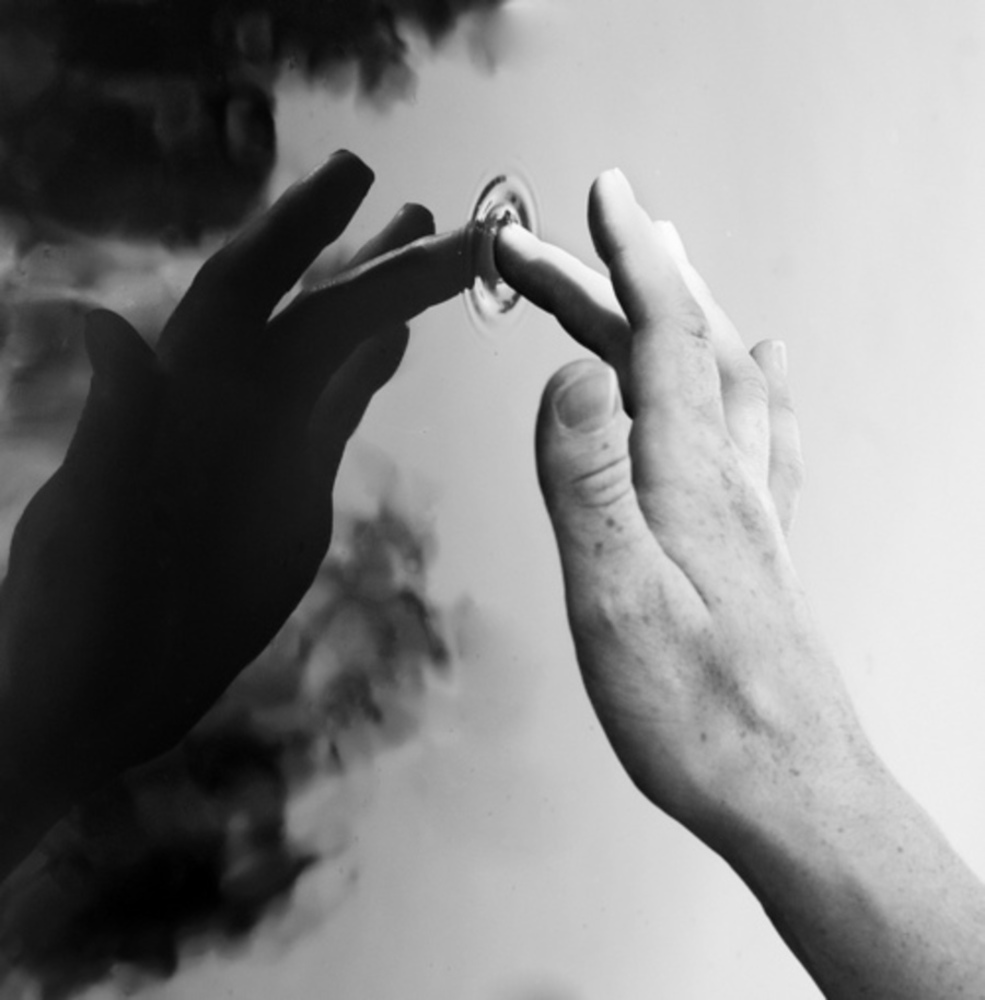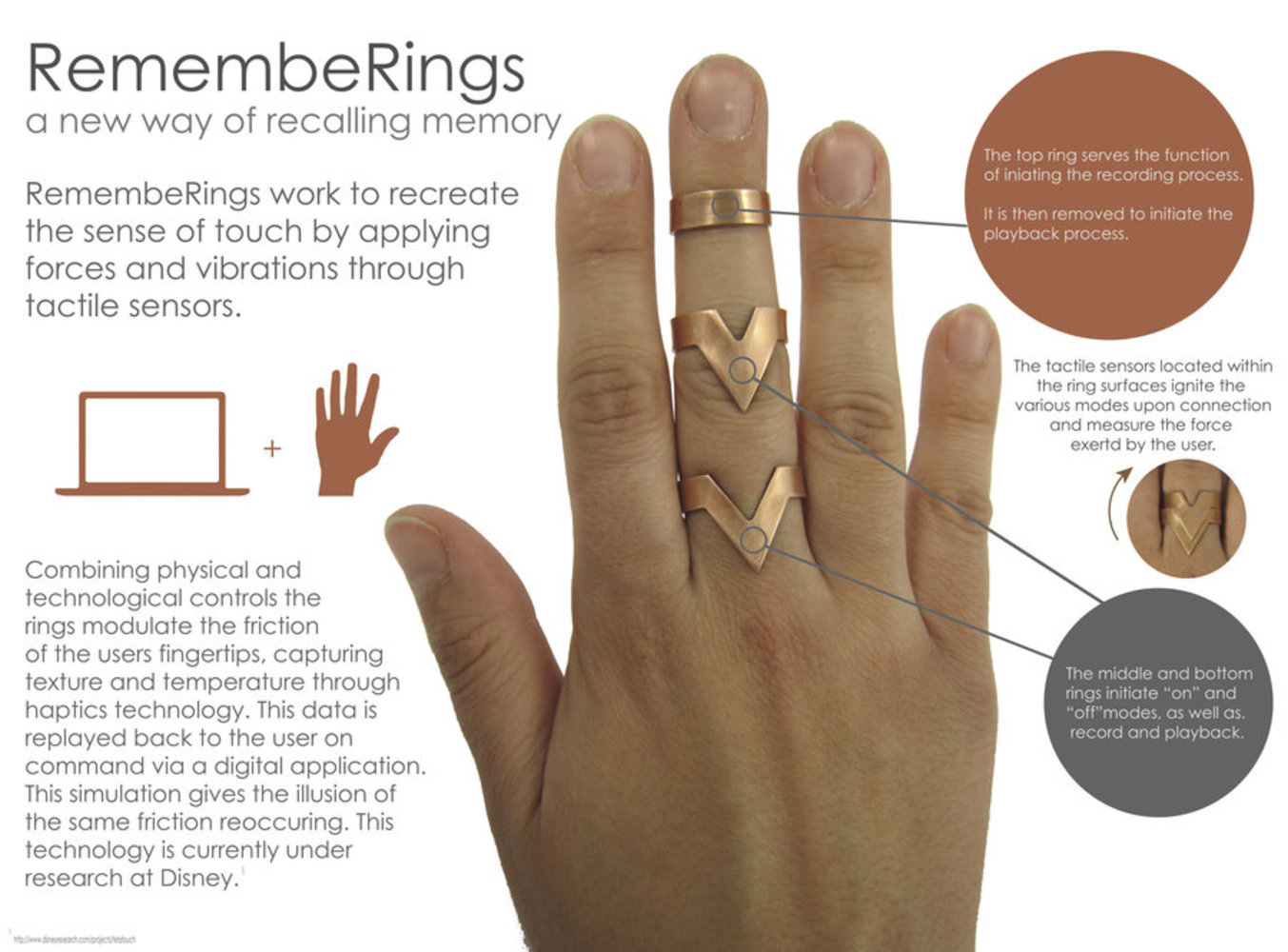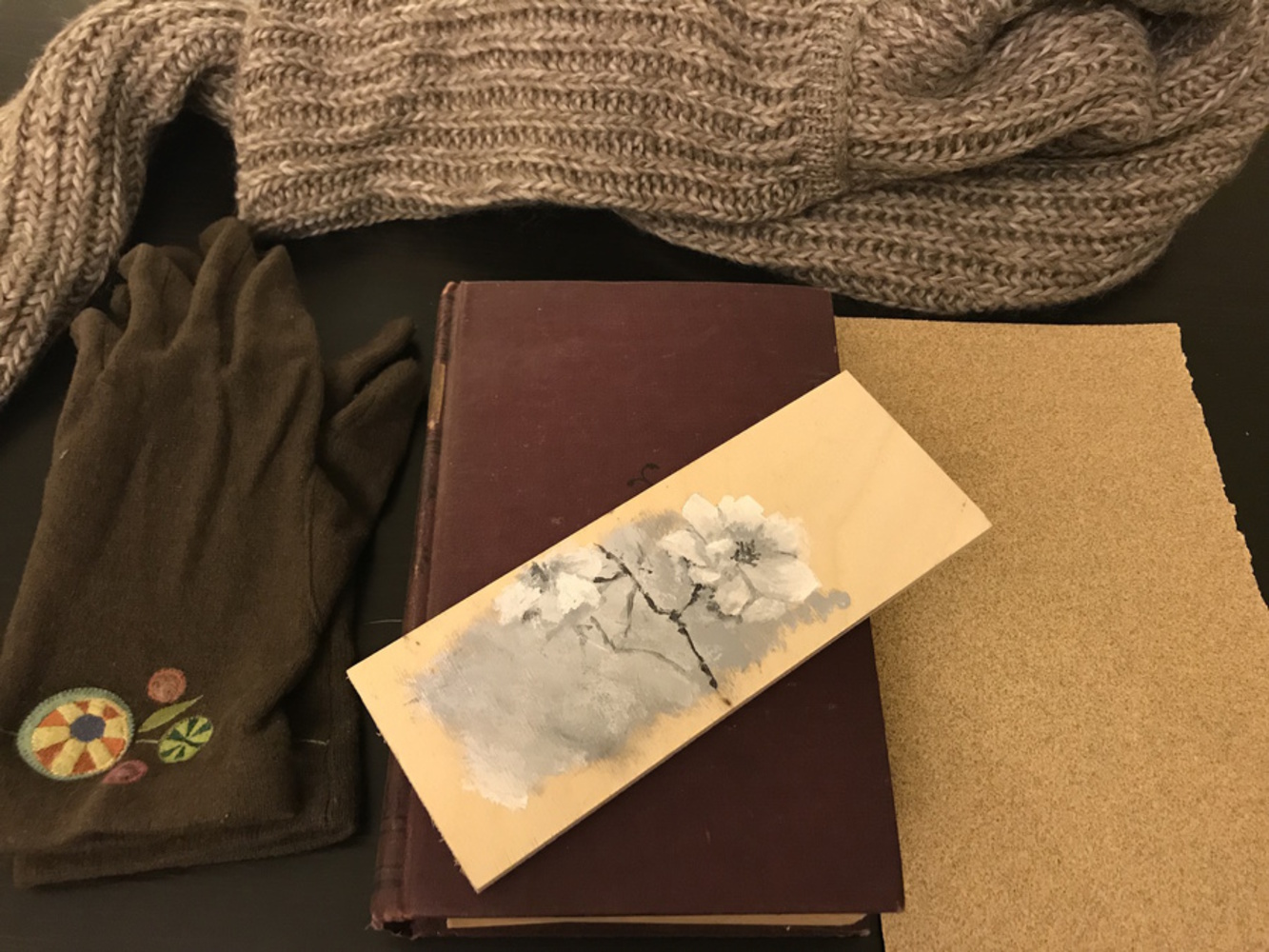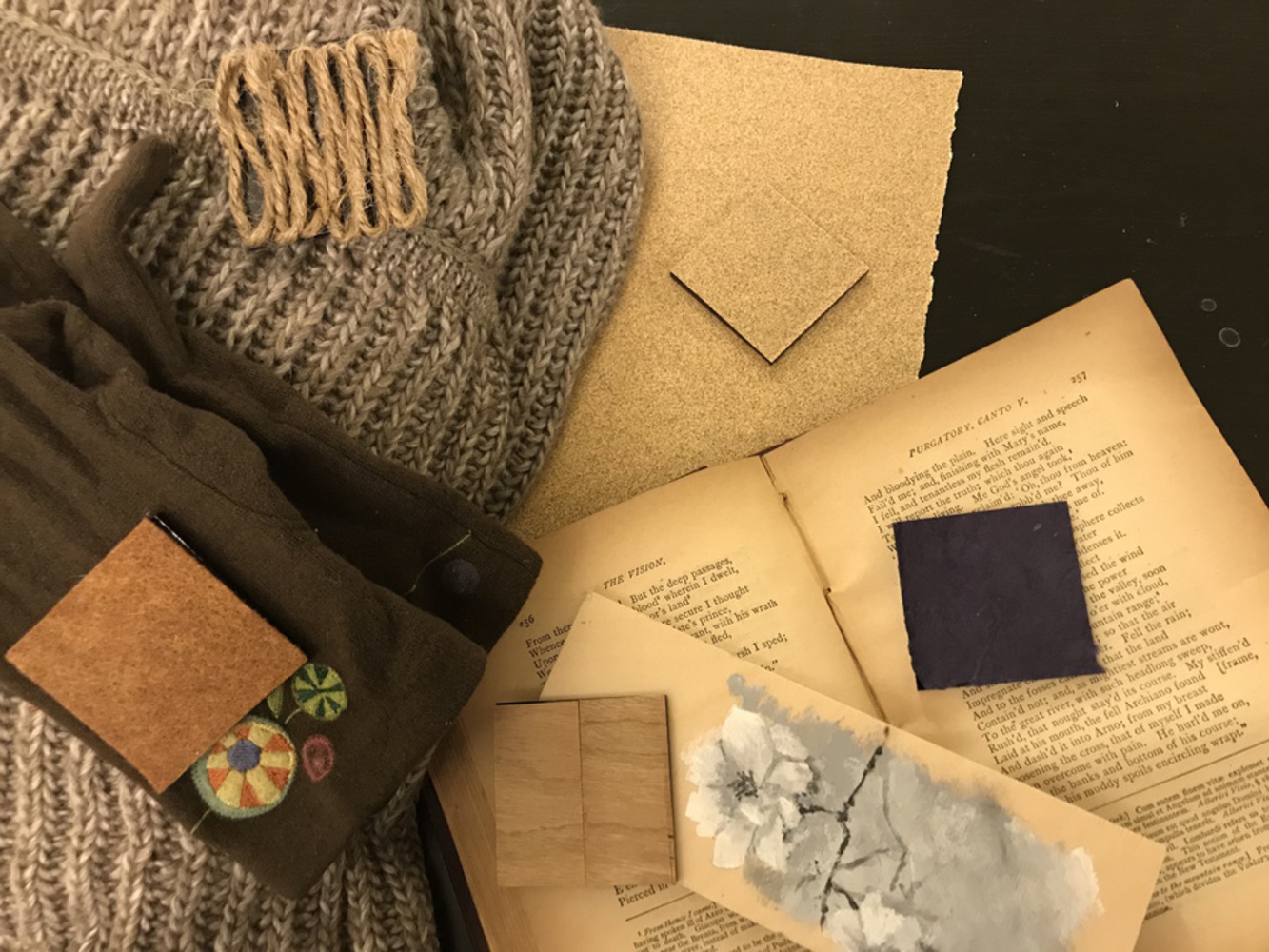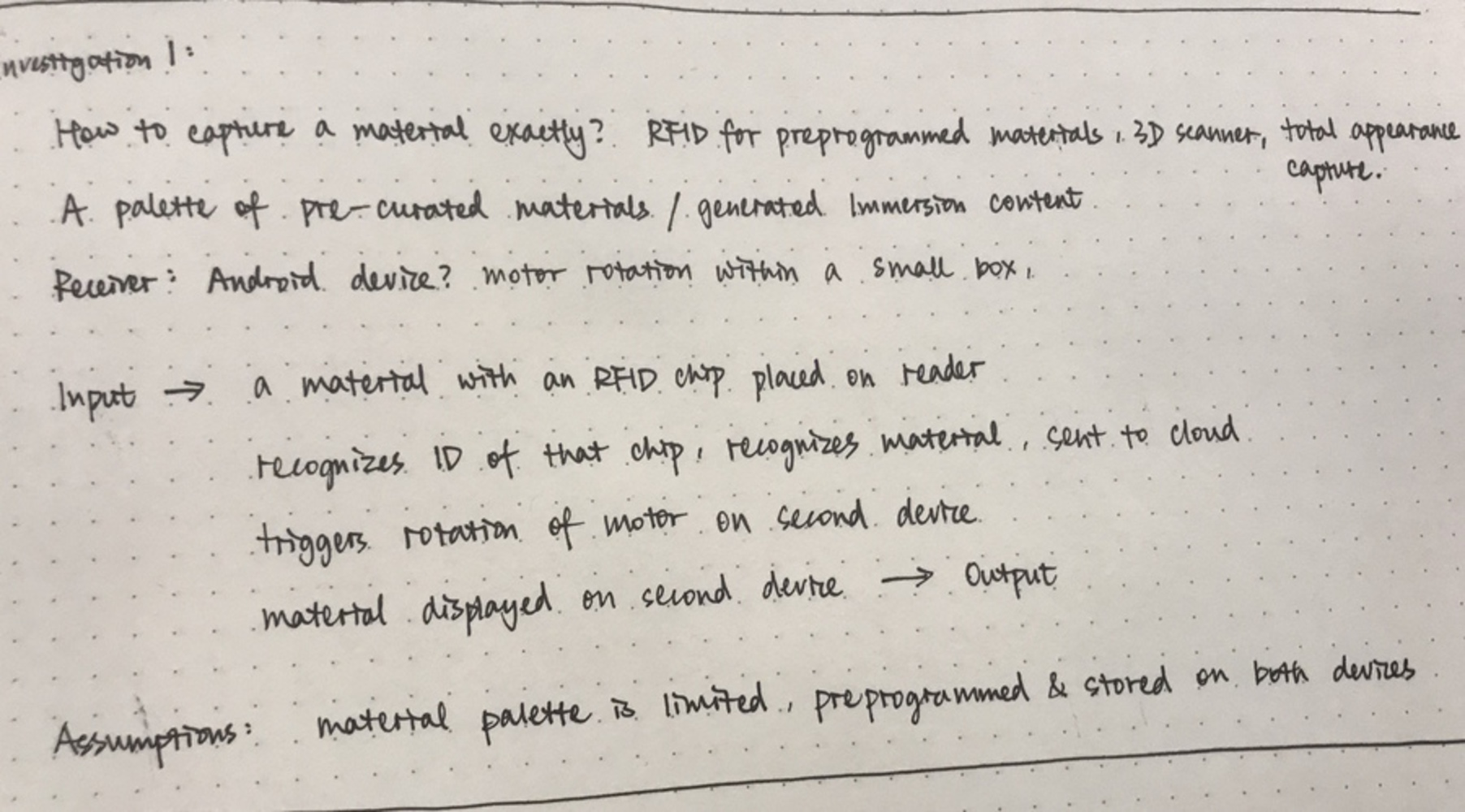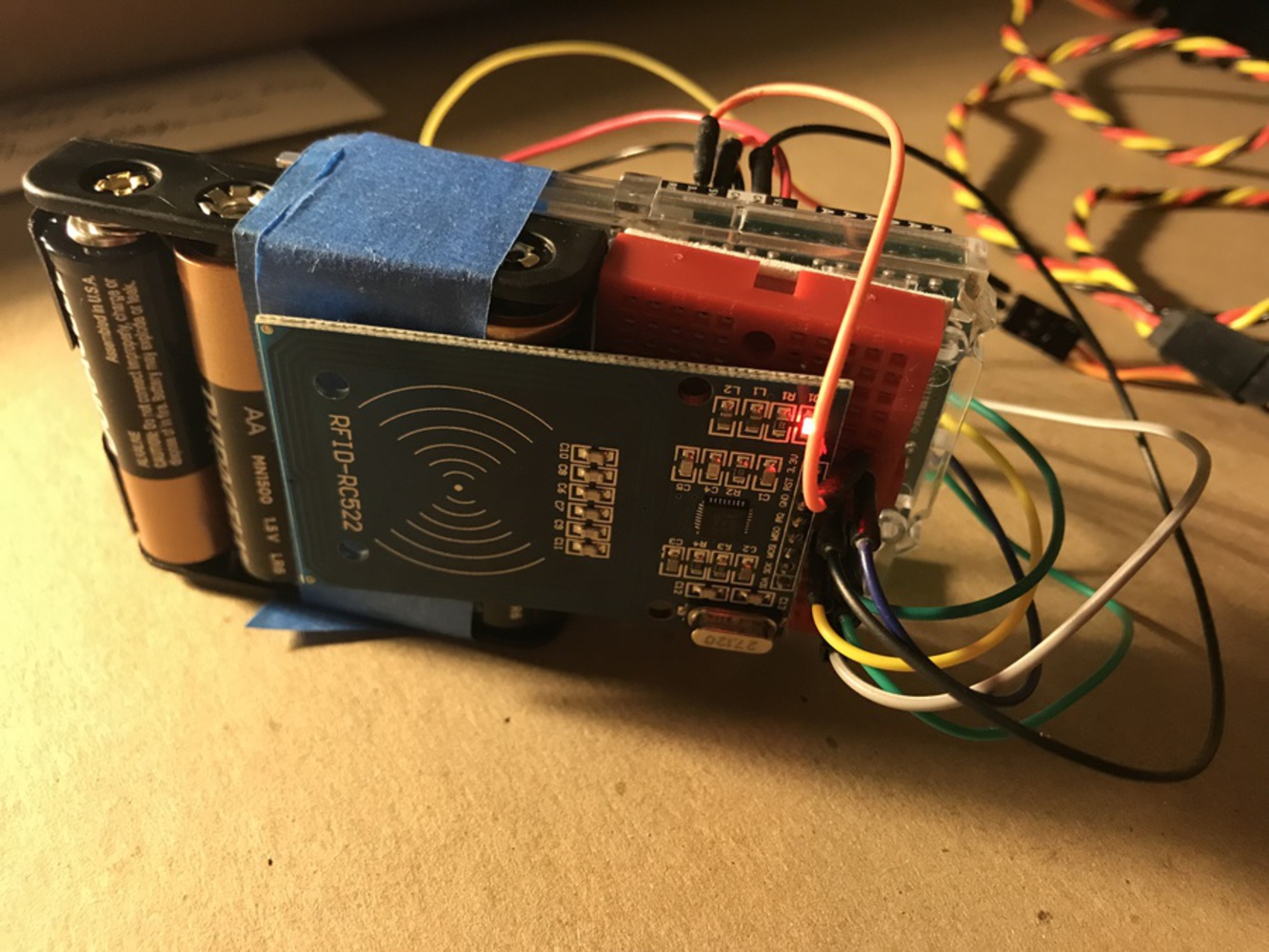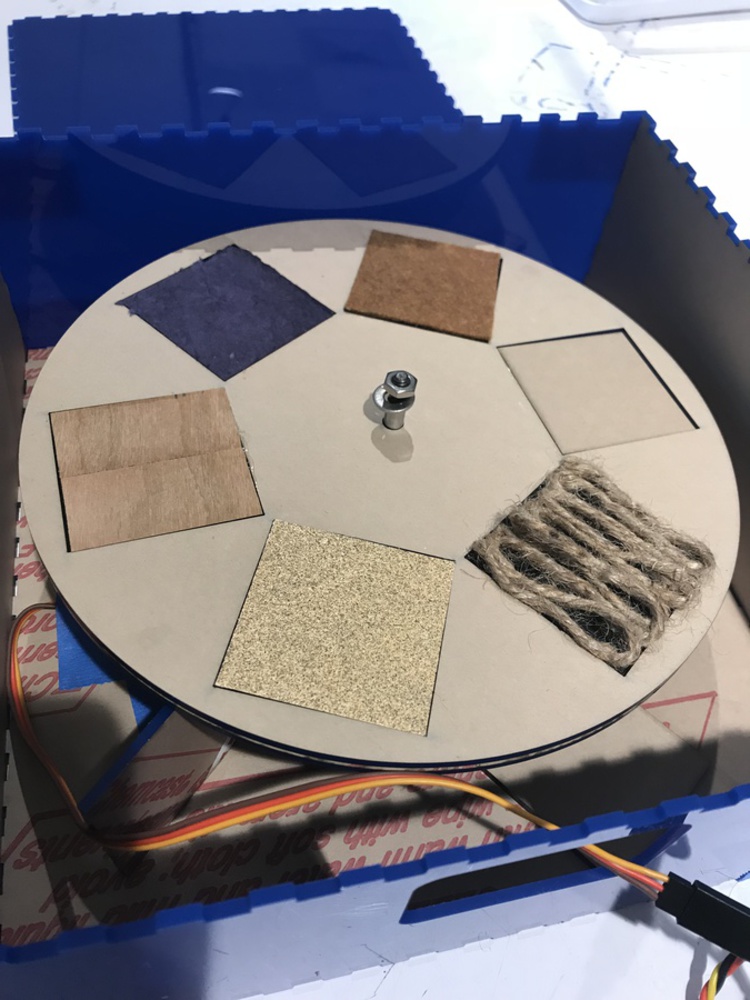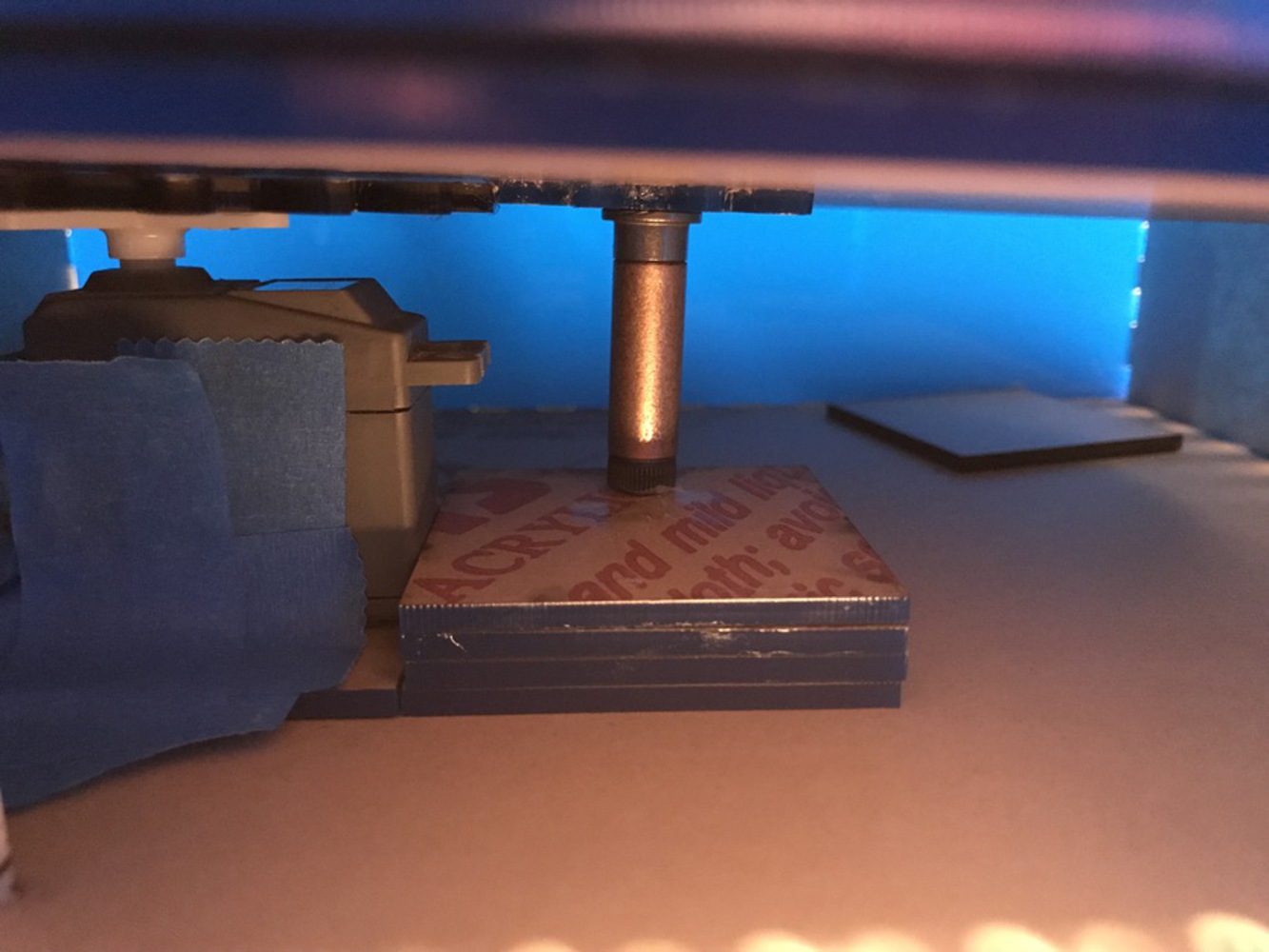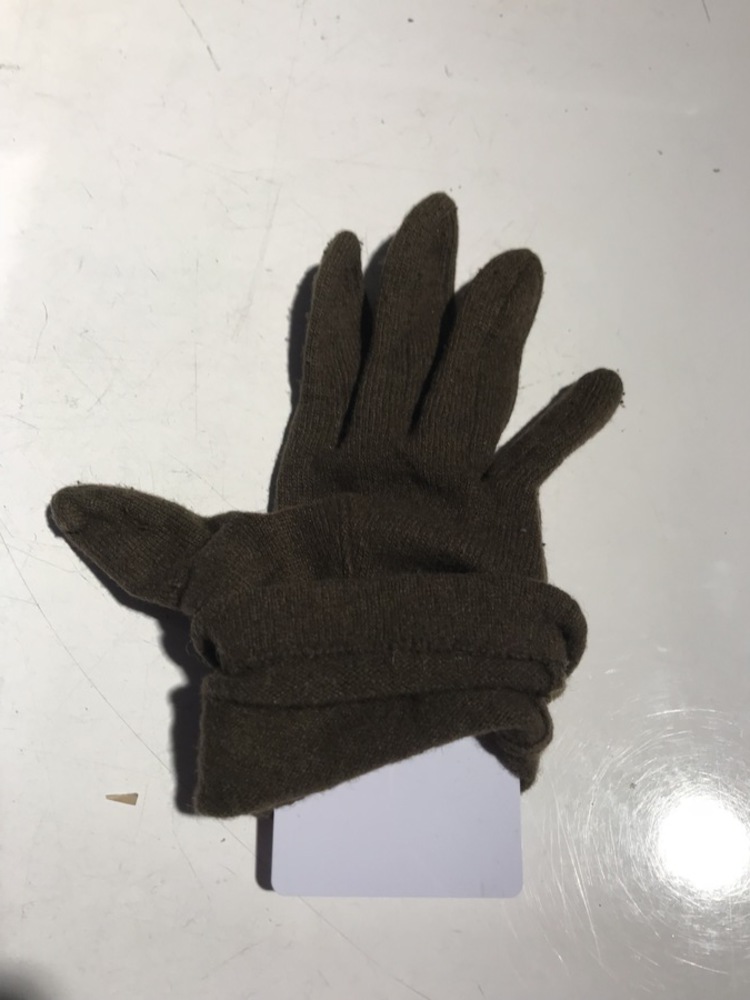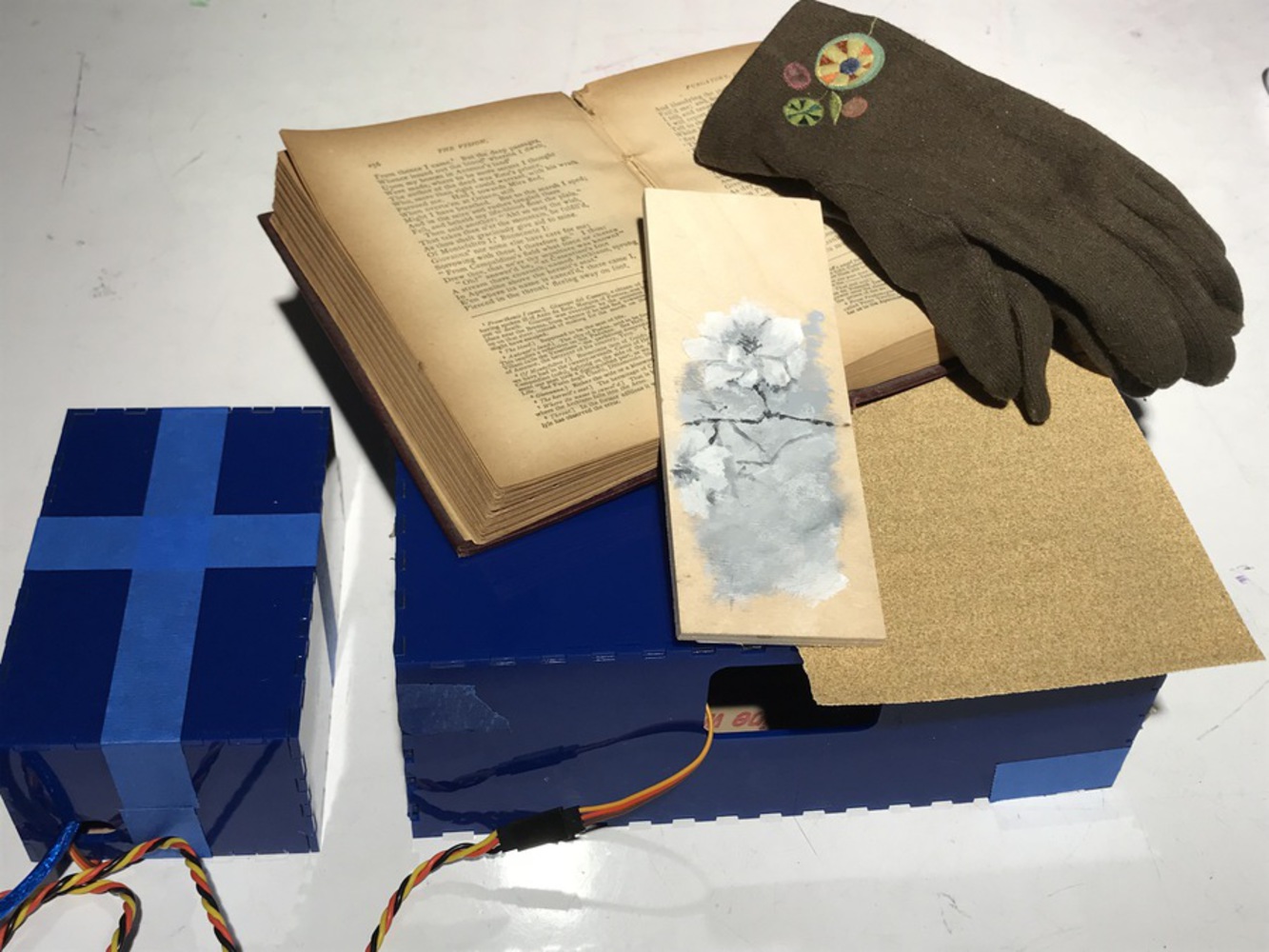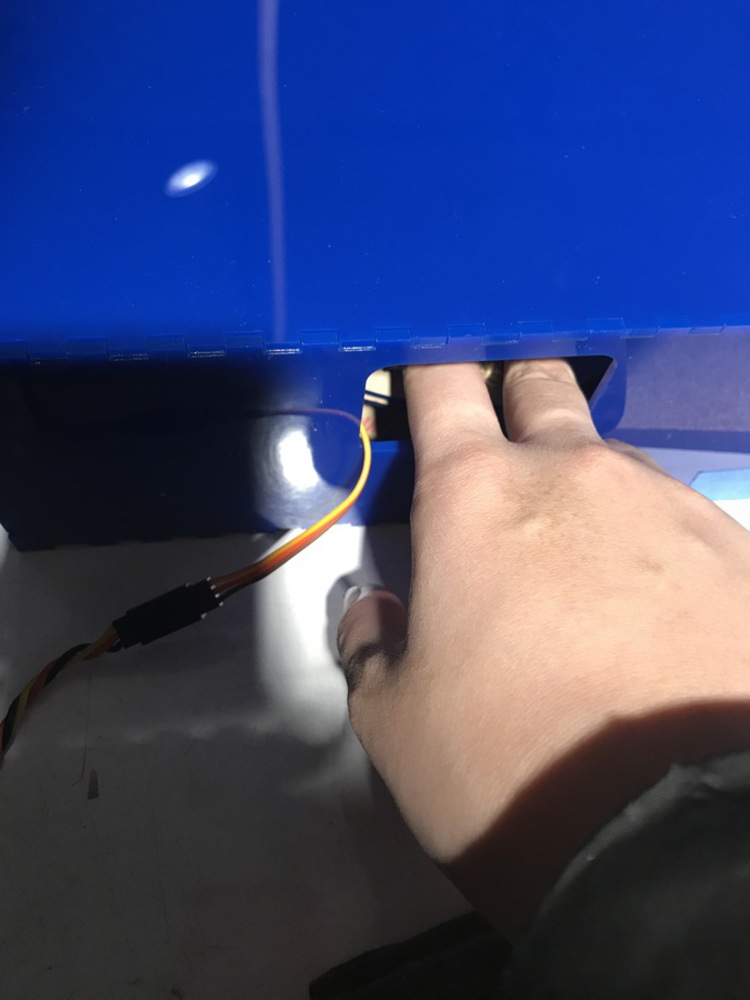Proposal
Being apart from the people you love could be difficult, even as the internet allows us to see and hear each other in real time, part of the experience is lost after traveling a thousand miles.
The touch of an object evokes a memory. The very first memories we have were tactile, and so often we remember an experience by touch without realizing. People often speak of wanting to take a piece of a place, or a piece of a person, with them. Through the recreation of an object central to a memory, accessing it later or sharing with another person, a digital device becomes a physical memento, able to be transported anywhere and re-experienced regardless of context. By sharing a tactile experience with someone else, two people are drawn closer. This project aims to enhance the sharing of experience by providing the aspect of touch.
By limiting the number of objects stored on the device, pieces of digitalized objects could be curated to retain only those most important.
